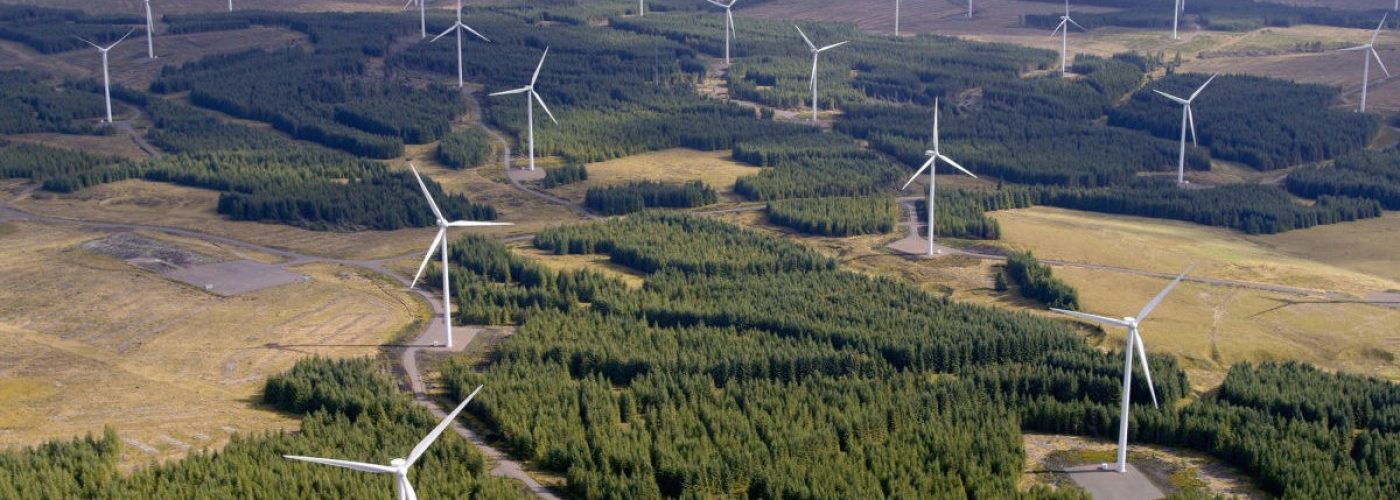- Current system ‘not fit for purpose’ for housing, net zero or restoring nature, IPPR report says
- Planning overhaul needed to expedite onshore wind following 2015 law change
- Streamline planning system to support new housing that integrates with transport and supports nature
The current English planning system is not ‘fit for purpose’ to build a net zero world, restore nature or meet housing need, according to a new report by the Institute for Public Policy Research (IPPR).
The report finds that it would take 4,700 years for England to reach the onshore wind capacity called for by government advisers, at the current rate of development. Without this the UK will fail to become fully energy secure in a net-zero world.
Progress in England was stalled in 2015 when planning laws were changed to make it more difficult to gain permission for new onshore wind turbines – in what was effectively a ban.
Since then only 17 new onshore wind farms have been approved, generating just 6.7 megawatts of power – equivalent to just 0.02 per cent of the on-shore total needed in England based on National Grid estimates. The IPPR report calls for restrictions on onshore wind and solar power to be reduced and for local authorities to be compelled to identify land suitable for onshore wind and solar generation.
The report calls for a complete reset of the English planning system to ensure that many more houses are built, while also moving faster to meet net zero targets. That will mean linking decisions on new home building into plans for low-carbon transport networks, it says. Between them, housing and transport account for over 40 per cent of total emissions, but since 1990 emissions from both sectors have barely declined.
The report also sheds fresh light on the critical failures of the current system. These include the lack of clear rules for developers and local authorities on when planning permission should be granted, leading to uncertainty and speculative buying of land.
It argues that local authorities should be compelled to draw up detailed plans for development in their areas that integrate environmental targets, to provide greater certainty. It proposes that if a planned housebuilding project meets new net zero targets alongside other local requirements, it should be given an automatic green light, removing much of councils’ discretion from the system.
But the report calls for the public to be given a more meaningful say over the future of their local areas than they do at present.
It calls for national and local housebuilding targets to be reinstated so that councils can be compelled to enable more homes to be built. Under the IPPR proposal new neighbourhoods should be compatible with net zero, contribute to restoring nature and be attractive communities to live in.
Maya Singer Hobbs, IPPR senior research fellow and lead report author, said:
“None of the failures of the English system are inevitable. The de facto ban on onshore wind, the lack of coherence in environmental regulations and the lack of good quality housing are all solvable by reforming the system.”
Luke Murphy, IPPR associate director for energy, climate, housing, and infrastructure, said:
“The current planning system in England is not remotely fit for purpose to build a net zero world, restore nature, or meet housing need. At current build rates, we’re as far from delivering the onshore wind we need for energy security as we are from the start of construction of Stonehenge in 2,500 BC.
“Fundamental planning reform is needed to accelerate efforts to reduce emissions and restore nature, rollout renewable energy generation, and to deliver the level of housebuilding that the country so desperately needs.
“Without a reset of the planning system all the main political parties will fail to deliver on their key objectives, from economic growth to energy security, and addressing the climate and nature crises.”
Building, Design & Construction Magazine | The Choice of Industry Professionals





